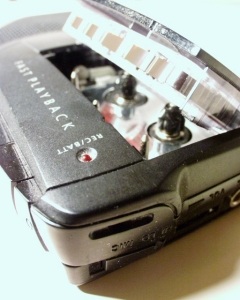Poor Man's Way of Recording Exposure
Exposure data are extremely important to photographers and students for consistent results. By understanding exposure, a photographer can repeat the same result time and again.
There are many portfolio quality photos that I would love to reproduce in similar situations in the future. Unfortunately, I was too hasty in shooting, composing, and worrying about other details to record the exposure information.
I titled this article "the poor man's way of recording exposure" because I am drooling over the exposure recording capability of the new Canon EOS 1V. Of course, it is way out of my price range.
I am sure you are aware that the cheapest way to record exposure is with a pen and a piece of paper. However, the process of using such fundamental devices mean you have to let go of the camera. In turn, it causes you to lose your composition, if the camera is hand-held. Even if you have the camera mounted on the tripod, the time it takes to write down the information may have caused you to lose the moving subject in your frame. The pen and paper method is simply too tedious to exercise to be practical.
I propose another poor man's method that I find extremely useful: the voice recorder. In my opinion, the voice recorder is an essential piece of photographic equipment. It allows the photographer to concentrate on shooting pictures and recording data at the same time. The photographer can easily record exposure data via voice without removing hands and eye from the camera body. Composition and subject tracking is, thus, retained. Data can then be transferred to paper or directly to print, or slide-mount, at a more leisure time.

The original voice recorders are tape recorders that use a physical media called the micro-cassette. Today, a tape recorder, such as the General Electric 35381 Voice-Activated Microcassette Recorder, can be had for around $30. These micro-cassette recorders are small enough to fit in a shirt pocket. They can be voice activated to conserve battery and tape length. With 30 minutes of recording time on one side of tape, A whole day of work can easily fit on a single tape for storage. The cost of micro-cassette is so affordable that the storage capacity of a tape recorder is virtually unlimited.
For the more technology-inclined photographer, a digital recorder, such as the Olympus V-90 Digital Voice Recorder, might be handier. In fact, with a digital recorder, data need not be retrieved in serial order, as do with the tape recorders. The digital recorder has less moving parts than the tape recorder, thus, can be made smaller and lighter than the tape models.
Also, many digital recorders allow voice messages to be downloaded to a computer for storage and processing. The download file can then be converted to text through speech-to-text software. The final text document can be easily printed on a printer. The Olympus DS-150 Digital Voice Recorder provides this data transfer capability.
Some digital recorders even allow you to save messages on SmartMedia cards. The cards are similar to the tapes, but allow random access to storage. With these cards, the storage capacity is virtually unlimited. One notable device is the Creative Labs Nomad II Digital Audio Player, which can play MP3 music files and doubles as a voice recorder at the same time!
Exposure data recording via voice is an extremely handy, yet affordable, capability that no photographer should be without. With practice, the act of composing, tracking subject, shooting, and recording exposure data can be done in a single step.
253 Users Online
|
$10000-above $5000-$9999 $2000-$4999 $1000-$1999 $500-$999 $200-$499 $100-$199 $50-$99 $25-$49 $0-$24 Gift Certificate |
|




